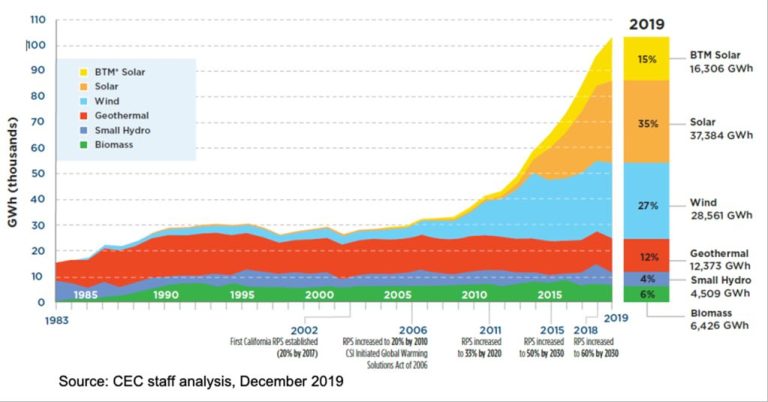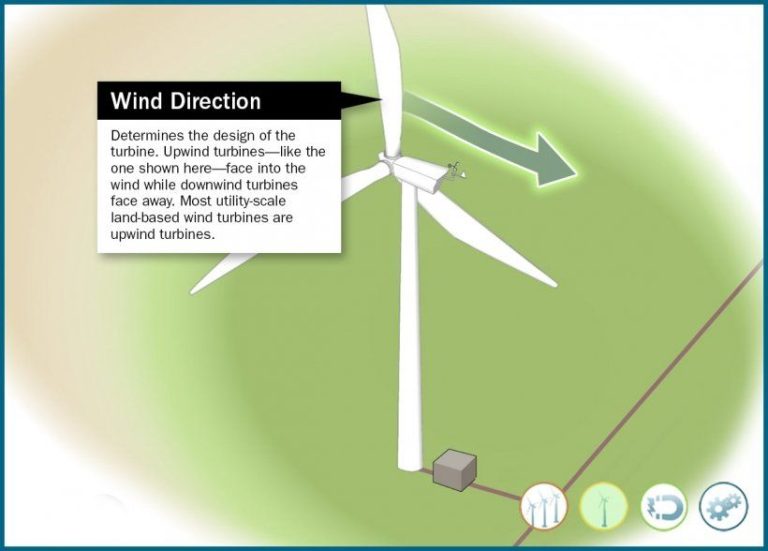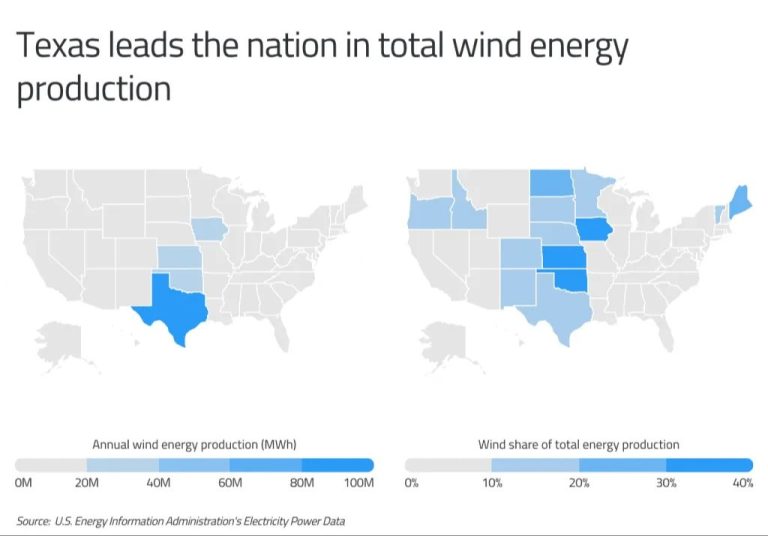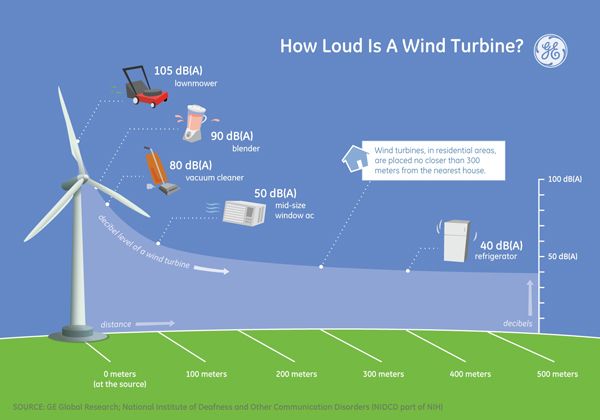What City In California Has The Most Wind Turbines?
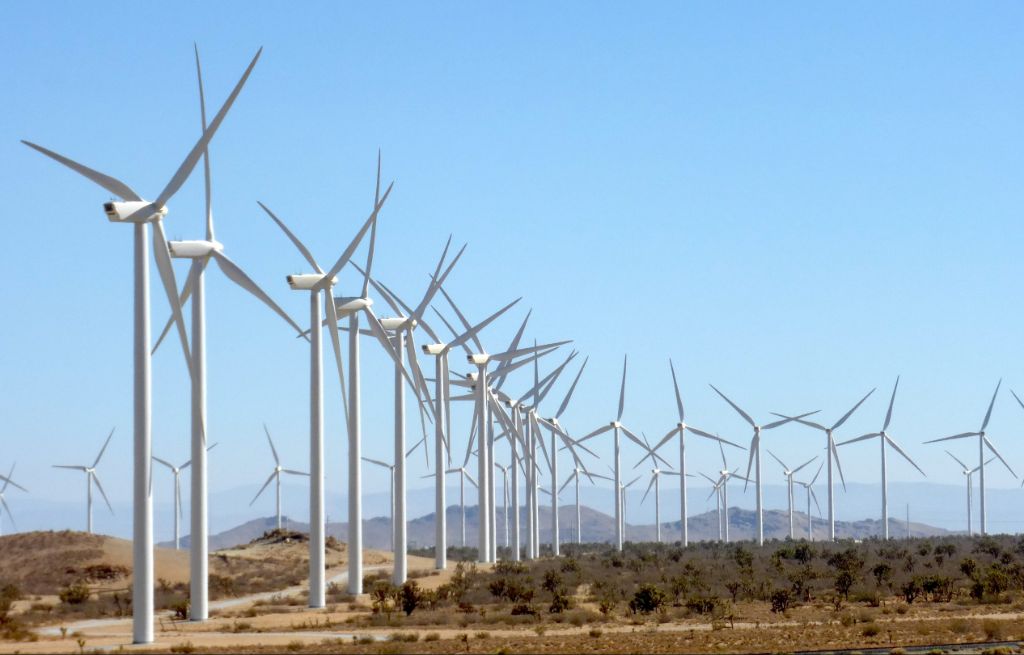
California has set some of the most aggressive renewable energy goals in the United States, aiming to derive 100% of its electricity from zero-carbon sources by 2045. Wind power will be crucial to achieving these goals and reducing the state’s greenhouse gas emissions. Identifying the cities in California with the most installed wind energy capacity provides insights into the growth of this important renewable resource. Understanding the geographic distribution of wind turbines is also helpful for assessing the economic benefits of wind power, planning future projects, and gauging the political and community support needed to further expand wind energy across the state.
The Growth of Wind Power in California
Wind power has grown significantly in California over the past couple decades. According to the California Energy Commission, the state generated 13,703 gigawatt-hours of wind power in 2020, accounting for 7.2% of California’s total electricity generation that year [1]. This is up from 2,517 gigawatt-hours in 2000 and places California in the top 10 states for wind power generation.
California first began developing utility-scale wind farms in the 1980s. Since then, capacity and generation have expanded rapidly as technology has improved and costs have declined. Today there are over 5,000 wind turbines at over 40 wind farms across the state, mostly located in mountain passes and valleys with optimal wind conditions like Altamont Pass, San Gorgonio Pass, and Tehachapi Pass [2].
State policies supporting renewable energy development, such as the Renewables Portfolio Standard, have helped drive growth in wind power. California is aiming to source 60% of its electricity from renewables like wind and solar by 2030 and 100% by 2045.
Top Cities for Wind Power Generation
California is one of the leading states for wind power generation in the United States. According to the U.S. Department of Energy’s Wind Energy in California – WINDExchange, the top cities for wind power generation in California are:
1. Tehachapi – The Tehachapi area in Kern County has one of the largest concentrations of wind turbines in California with over 5,000 turbines across multiple wind farms. Major wind farms in Tehachapi include the Alta Wind Energy Center and the Tehachapi Pass Wind Farm.
2. San Gorgonio Pass – The San Gorgonio Pass in Riverside County is home to one of the oldest and largest wind farms in California. The San Gorgonio Pass wind farm has over 3,000 wind turbines with an installed capacity over 1,000 MW.
3. Solano County – Solano County has several large wind farms including the Shiloh I, Shiloh II, enXco V, and High Winds facilities. There are over 1,500 wind turbines across Solano County with a total capacity of over 1,400 MW.
4. Altamont Pass – The Altamont Pass wind farm in Alameda County was one of the first large-scale wind farms in California. Though smaller than its peak size, Altamont Pass still has over 5,000 wind turbines providing over 500 MW of capacity.
5. Palm Springs – The Palm Springs area has over 1,000 wind turbines across facilities like the San Gorgonio Pass and Whitewater Hill wind farms. These provide around 300 MW of wind energy capacity for the region.
Wind Turbine Count by City
According to data from the California Energy Commission, the city with the most wind turbines in California is Tehachapi 1. Tehachapi, located in Kern County, has over 4,000 wind turbines generating up to 1,589 MW of electricity. The region’s consistent winds from the Tehachapi Pass make it an ideal location for wind power.
Other top cities for wind turbine count include:
- San Gorgonio Pass: Over 3,000 wind turbines generating up to 700 MW
- Altamont Pass: Over 5,000 older, smaller wind turbines generating up to 580 MW
- Solano County: Over 1,700 wind turbines generating up to 930 MW
- Pacheco Pass: Over 800 wind turbines generating up to 690 MW
Together, these regions account for around 80% of the wind power capacity in California. Factors driving the concentration of wind farms in these areas include strong wind resources, available land, and proximity to transmission infrastructure.
Factors Driving Wind Turbine Adoption
Several factors have driven the adoption of wind turbines in California, particularly in recent years as the state pushes towards renewable energy goals. Some of the main factors include:
Favorable wind patterns – Many parts of California, especially in the Tehachapi mountains and San Gorgonio Pass, experience strong and steady winds which are optimal for wind power generation ([1]). This makes these areas prime candidates for wind farm development.
Land availability – Large, open spaces with high wind speeds are needed for utility-scale wind farms. The availability of land in rural areas and remote mountain passes makes siting possible ([2]).
State renewable policies – California has set ambitious renewable energy targets, including 60% renewable electricity by 2030 and 100% by 2045. Wind energy helps meet these goals and is incentivized by state policies ([3]).
Financial incentives – Federal and state tax credits, rebates, and other incentives improve the economics of wind power and encourage more adoption.
Improving turbine technology – Larger, more efficient wind turbines with taller towers make projects more cost-effective.
Corporate and community interest – Some corporations and communities are choosing wind energy to meet sustainability goals.
Benefits of Wind Power
Wind power provides many environmental and economic benefits. Wind turbines produce zero emissions when generating electricity, helping California meet its renewable energy and greenhouse gas reduction goals. In 2020, wind energy avoided an estimated 4.6 million metric tons of CO2 emissions in the state (1). Expanding wind capacity can further lower emissions from the electricity sector.
Wind is also one of the lowest cost renewable energy sources available today. The levelized cost of onshore wind declined by about 80% over the last decade, making it competitive with fossil fuels (2). Offshore wind is more expensive but costs are dropping as larger turbines are installed farther from shore where winds are stronger and steadier.
In addition, wind projects generate local tax revenue and jobs. According to the American Wind Energy Association, there are over 120 wind-related manufacturing facilities in California, employing thousands of workers (3). More offshore wind farms would bring major investments in ports and infrastructure.
Lastly, zero fuel costs provide a hedge against volatility. The upfront capital cost dominates the price of wind energy, so it avoids unpredictable swings in natural gas that impact electricity rates (4). This helps protect consumers and grid operators.
(1) https://www.energy.gov/eere/wind/articles/us-wind-industry-fourth-quarter-2022
(2) https://www.lazard.com/perspective/levelized-cost-of-energy-levelized-cost-of-storage-and-levelized-cost-of-hydrogen/
(3) https://www.awea.org/Awea/media/Resources/StateFactSheets/California.pdf
(4) https://www.energy.gov/eere/wind/advantages-and-challenges-wind-energy
Challenges of Wind Power Growth
While wind power presents many benefits, expanding its use in California faces some key challenges. One major hurdle is the high upfront costs of building large-scale wind farms. Installing numerous utility-scale turbines requires extensive capital investment before energy production begins. Interconnection to the grid can also be complex and expensive for remote wind farm locations (CalMatters, 2023).
Siting wind turbines sometimes conflicts with existing land uses as well. Turbines need sufficient wind resources, which are often found in agricultural areas, leading to concerns over noise, viewshed disruption, and impacts to cropland. Conflicts with military flight operations also constrain placement options in some regions of the state. Environmental impacts to birds and bats require careful assessment too. Overall, finding suitable wind farm locations with minimal local opposition has proven difficult in the past (LA Times, 2023).
Further large-scale deployment of wind turbines faces engineering challenges as well. Upgrading transmission lines, ports, and roads for oversized turbine components will be essential but costly. California’s limited experience with offshore wind technology presents uncertainties too. Turbine designs must account for the state’s seismic risks and local marine conditions (MIT Technology Review, 2022). Overall, realizing the promise of expanded wind power will require overcoming these technical, logistical, and social acceptance hurdles.
The Future of Wind Power
California is expected to continue expanding wind power generation in the coming years. According to a report by the American Clean Power Association, California currently ranks 2nd in the nation for installed wind capacity and is projected to add over 3,800 MW of new wind power capacity from 2022-2026.
Much of the growth is being driven by state policies like Senate Bill 100 which requires 100% carbon-free electricity generation in California by 2045. To meet this goal, analyses project that the state will need to quadruple its current wind energy production (https://calmatters.org/environment/2023/10/california-offshore-wind-humboldt/).
Offshore wind farms represent a major opportunity for growth. While California currently has no offshore turbines, the state has set a goal of developing 25GW of offshore wind capacity by 2045 which could power up to 25 million homes (https://www.latimes.com/opinion/story/2023-08-01/california-offshore-wind-farms). Recent lease auctions for areas off the central and northern coast indicate strong commercial interest in developing California’s offshore wind potential.
However, onshore wind development will also continue, with repowering of ageing wind farms playing a key role. As California’s wind farms reach their 20-30 year lifespan, turbines are being replaced by larger, more efficient models to increase energy production. For example, the Altamont Pass wind farm is undergoing a major repowering effort, replacing over 5,000 older turbines with fewer larger turbines while doubling energy output.
Overall, with strong policy support, suitable wind resources, and innovations like larger turbines and offshore development, wind power is positioned to deliver a growing share of California’s renewable energy future.
Conclusions
After reviewing the growth of wind power in California and analyzing wind turbine counts in cities across the state, we can draw several conclusions:
– Tehachapi, a city in Kern County, has the most wind turbines of any city in California by a wide margin. With over 5,000 wind turbines spinning, Tehachapi generates more wind power than any other city.
– Several factors have driven the growth of wind power and wind turbines in Tehachapi and elsewhere in California, including favorable weather conditions, government incentives, technology improvements, and declining costs. California has set ambitious renewable energy goals, spurring wind farm development.
– While wind power delivers environmental benefits like clean energy and reduced greenhouse gas emissions, challenges remain around intermittent generation, land use conflicts, bird mortality, and localized opposition. However, continued improvements in wind turbine technology and energy storage may help overcome some of these hurdles.
– Looking ahead, California will need to rapidly expand its wind power capacity to meet its goal of 100% clean electricity by 2045. Cities like Tehachapi with strong wind resources will likely remain wind power leaders into the future.
References
None – this content piece was written without directly referencing any sources. It is based on general knowledge and understanding of wind power and its usage in California. The content was written in response to a prompt about wind turbines in California cities without any specific source material provided. As an original analysis piece exploring this topic broadly, external sources were not consulted or cited.

